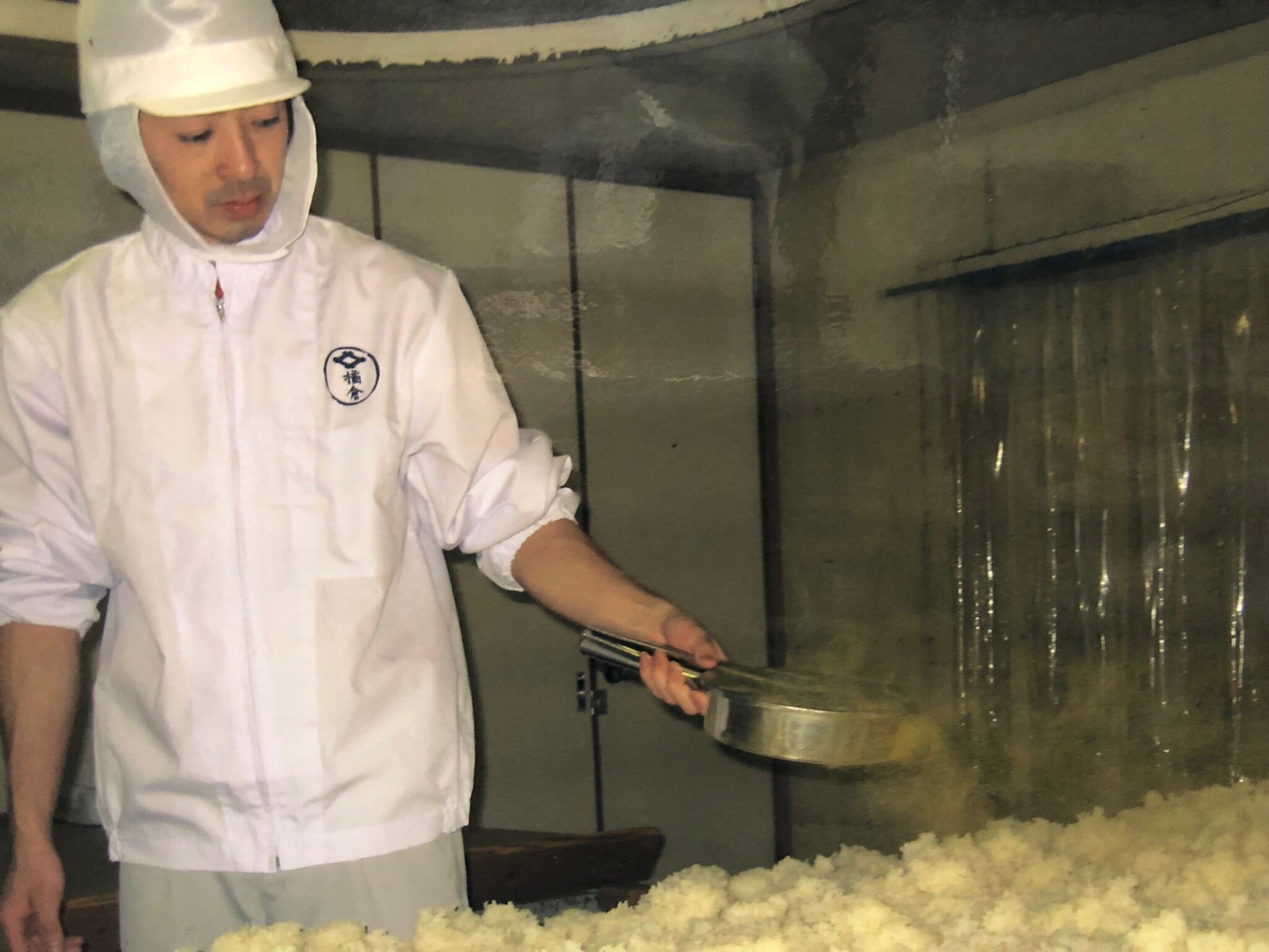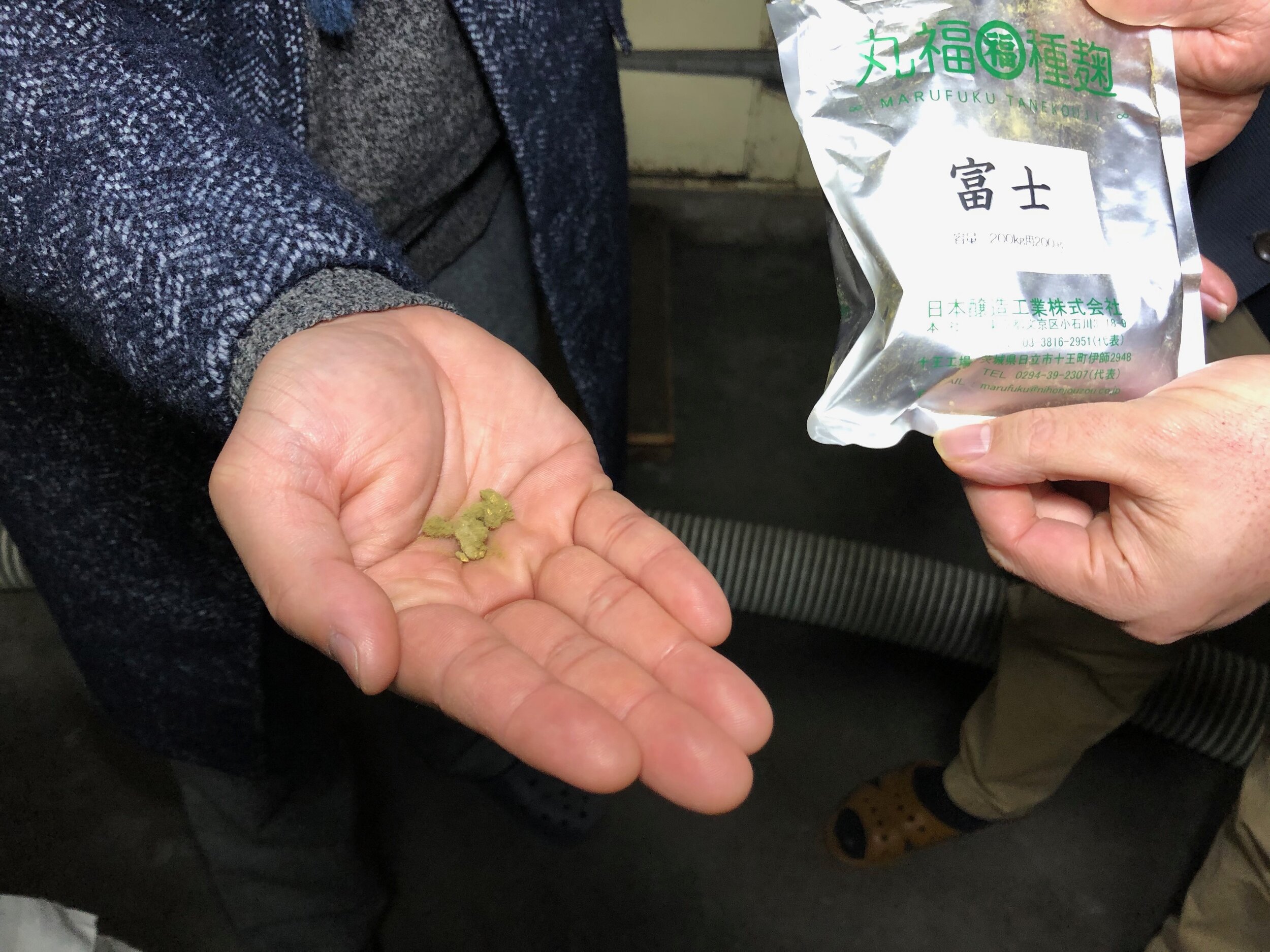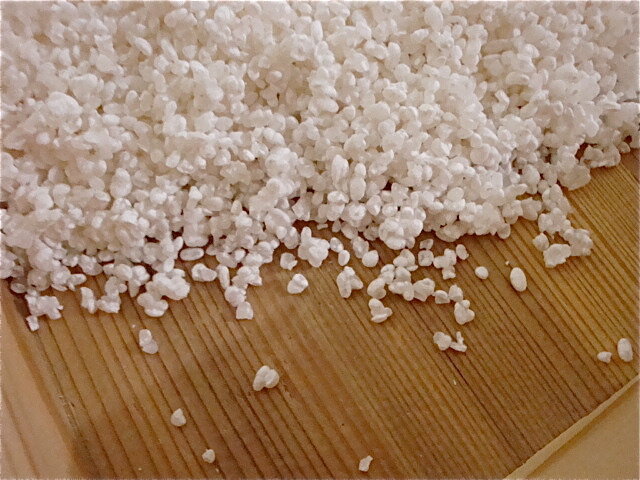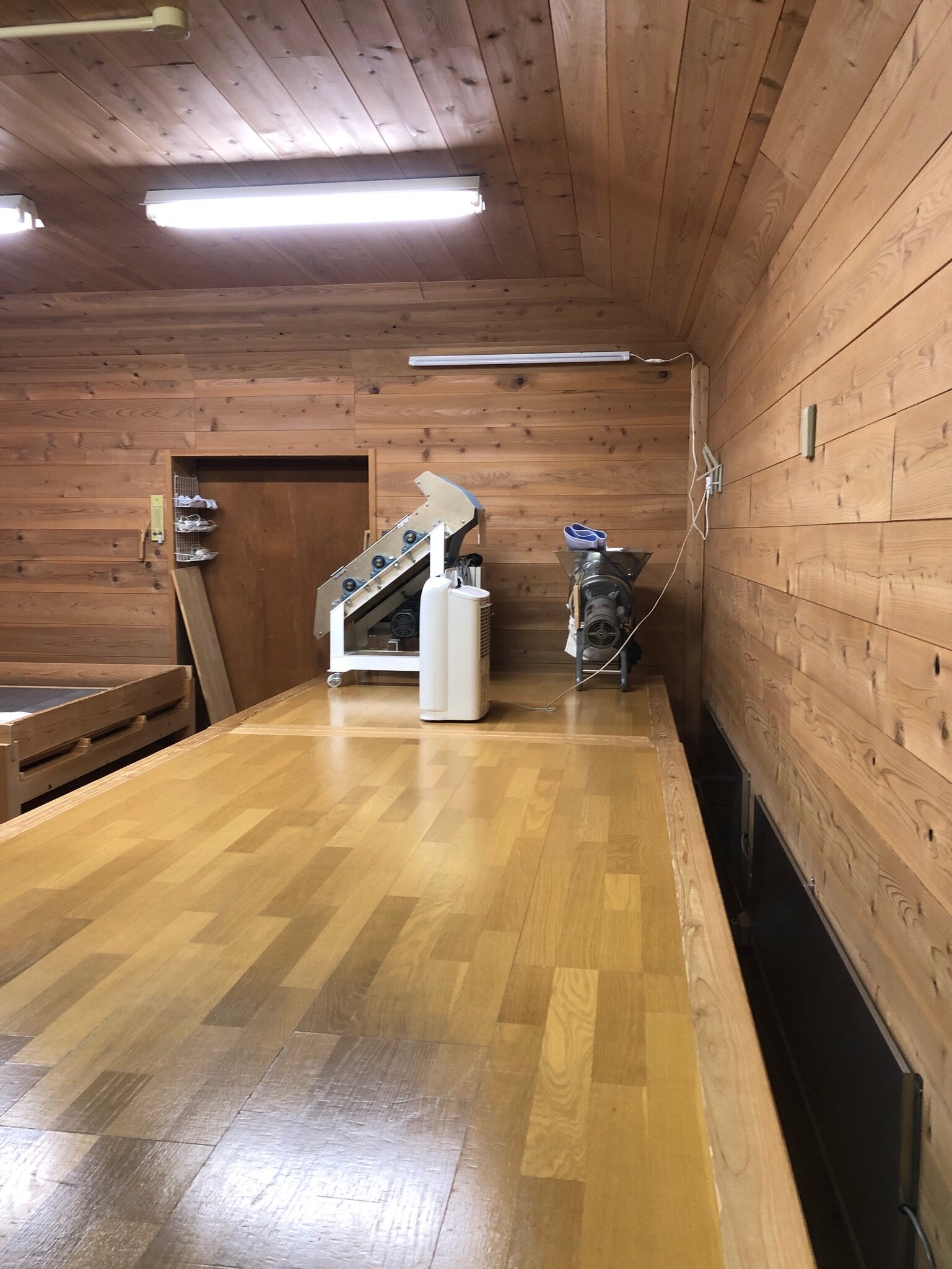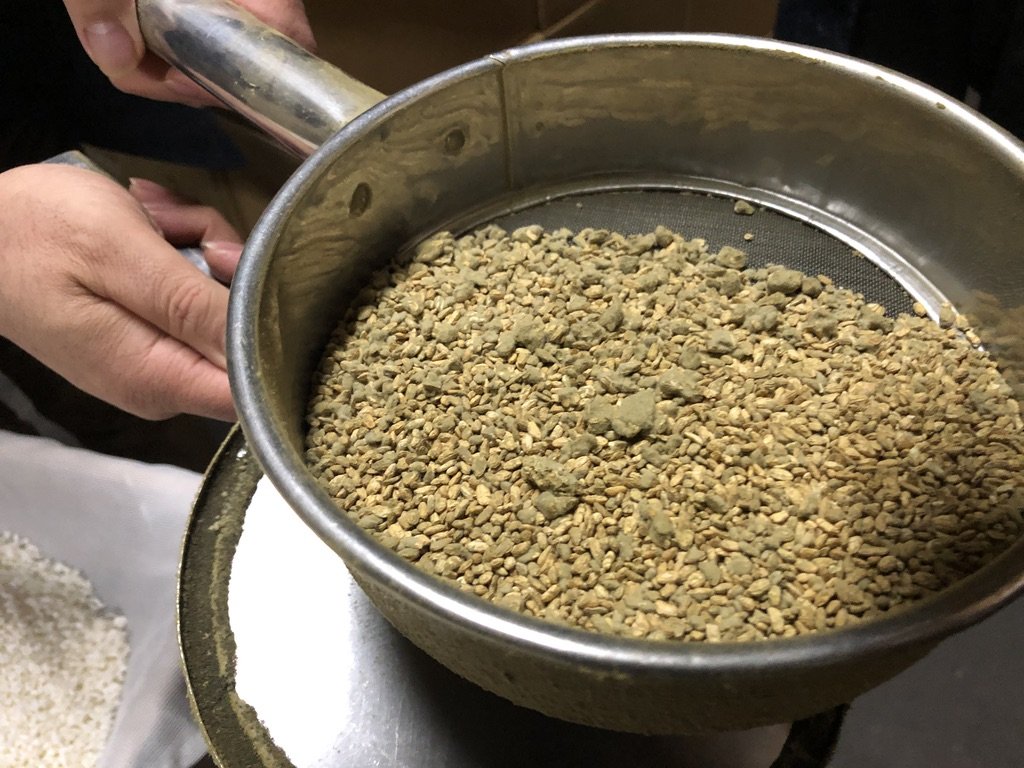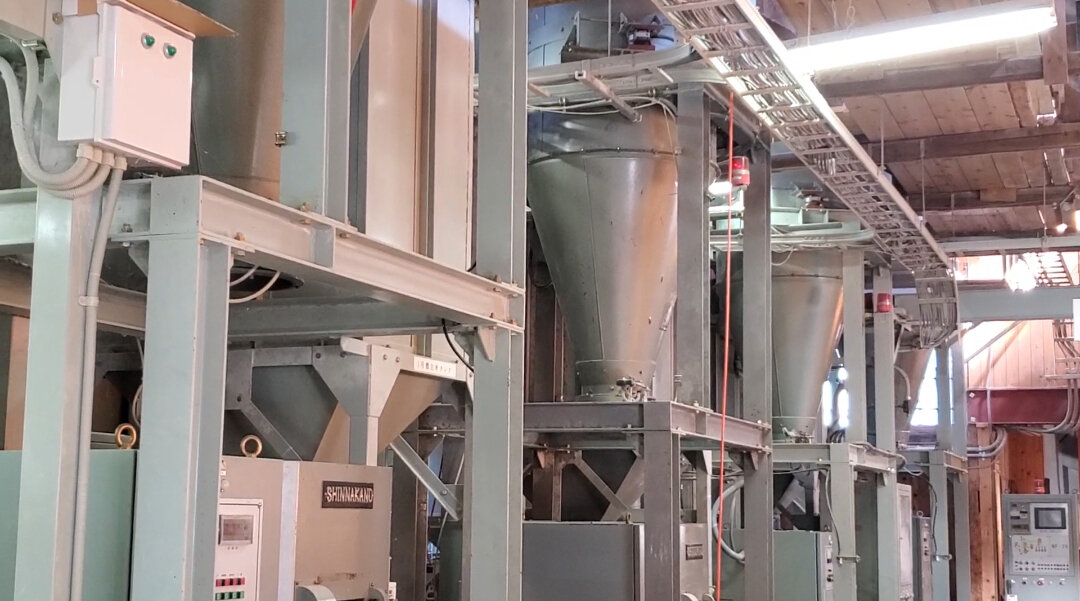
Sake Production
Step 5. Koji Production
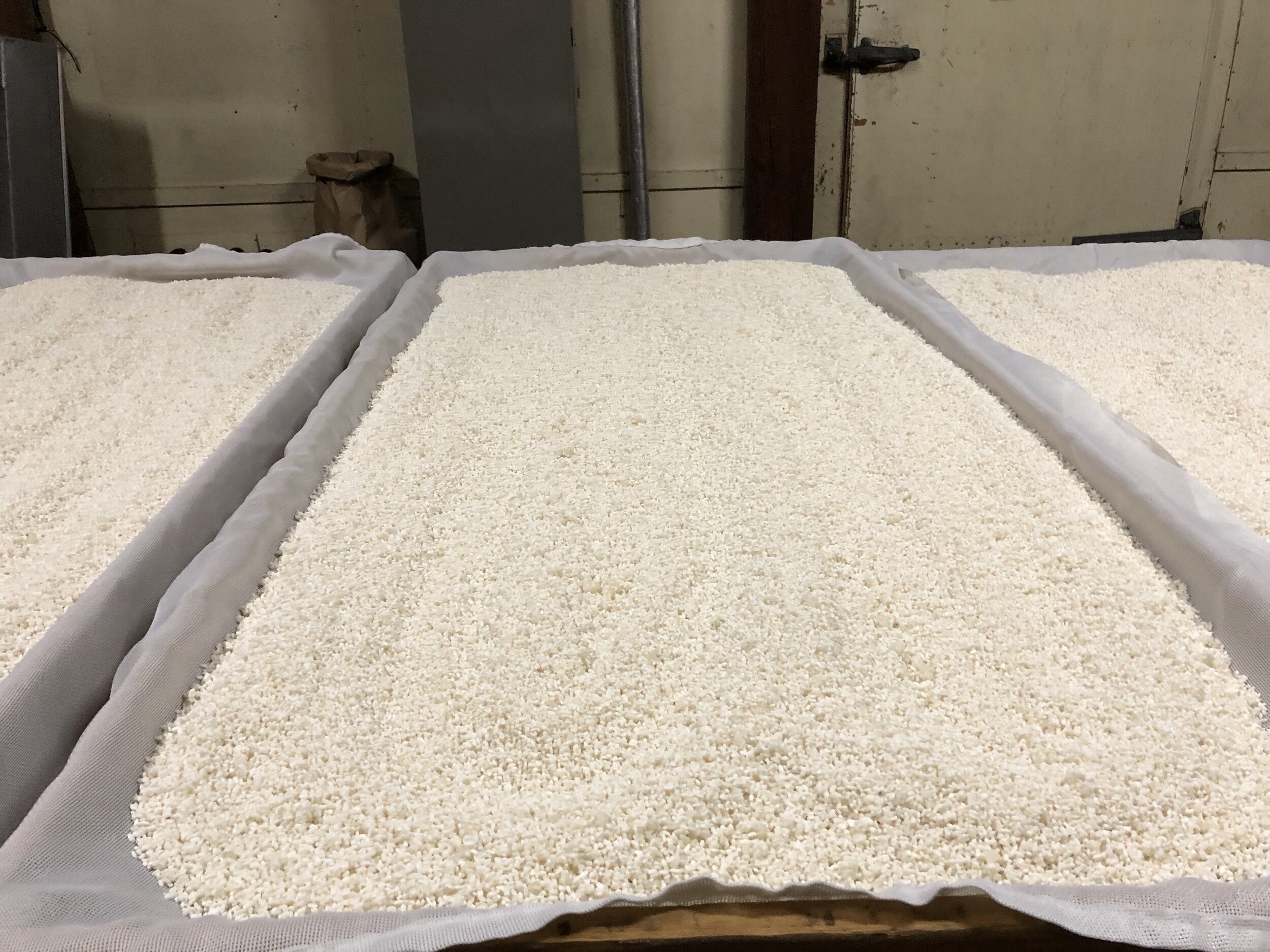
From Koji kin to Koji
Koji-Kin, (Aspergillus Oryzae) is an enzymatic mold spore that has been cultivated throughout Japan and Asia for centuries to created fermented cereal grain products such as Shoyu, Miso, Mirin, Sake, Shochu, Whisky and occasionally… Beer.
In the correct conditions the Koji enzymes breakdown rice starch and proteins to produce a host of amino acids and glucose essential to yeast for alcoholic fermentation. In the case of Sake, immediately following steaming, the rice is transferred to a Koji-Mura; typically a cedar-lined, temperature-controlled, sauna-like room where yellow koji-kin (spores) are sprinkled, sifted, dusted or massaged onto the surface of freshly steamed sake rice after its temperature cools to 33C-36C.
For the next 48-54 hrs. the Koji-Mura’s temperature and humidity are precisely modulated, depending on the milling grade, to coax the moisture-seeking koji mycelia to grow on the surface and then into the starchy interior of each rice grain. Excessive koji growth yields heavier umami laden sake; too little koji and the lack of nutrients and glucose inhibit the sake yeast from completing fermentation. Mastery of Koji development is at the heart of all great sake.
